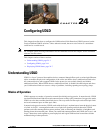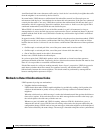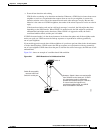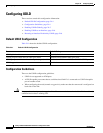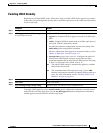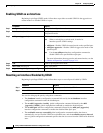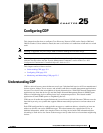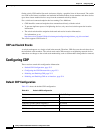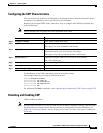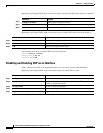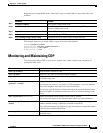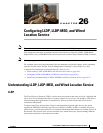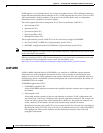
CHAPTER
25-1
Catalyst 2960 and 2960-S Switch Software Configuration Guide
OL-8603-09
25
Configuring CDP
This chapter describes how to configure Cisco Discovery Protocol (CDP) on the Catalyst 2960 and
2960-S switches. Unless otherwise noted, the term switch refers to a standalone switch and to a switch
stack.
Note Stacking is supported only on Catalyst 2960-S switches running the LAN base image.
Note For complete syntax and usage information for the commands used in this chapter, see the command
reference for this release and the “System Management Commands” section in the Cisco IOS
Configuration Fundamentals Command Reference, Release 12.2.
This chapter consists of these sections:
• Understanding CDP, page 25-1
• Configuring CDP, page 25-2
• Monitoring and Maintaining CDP, page 25-5
Understanding CDP
CDP is a device discovery protocol that runs over Layer 2 (the data link layer) on all Cisco-manufactured
devices (routers, bridges, access servers, and switches) and allows network management applications to
discover Cisco devices that are neighbors of already known devices. With CDP, network management
applications can learn the device type and the Simple Network Management Protocol (SNMP) agent
address of neighboring devices running lower-layer, transparent protocols. This feature enables
applications to send SNMP queries to neighboring devices.
CDP runs on all media that support Subnetwork Access Protocol (SNAP). Because CDP runs over the
data-link layer only, two systems that support different network-layer protocols can learn about each
other.
Each CDP-configured device sends periodic messages to a multicast address, advertising at least one
address at which it can receive SNMP messages. The advertisements also contain time-to-live, or
holdtime information, which is the length of time a receiving device holds CDP information before
discarding it. Each device also listens to the messages sent by other devices to learn about neighboring
devices.



